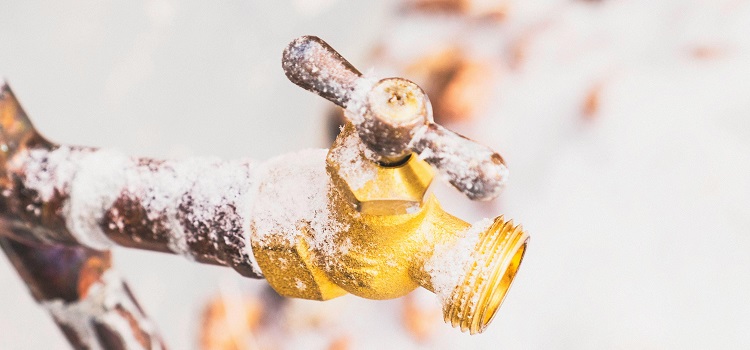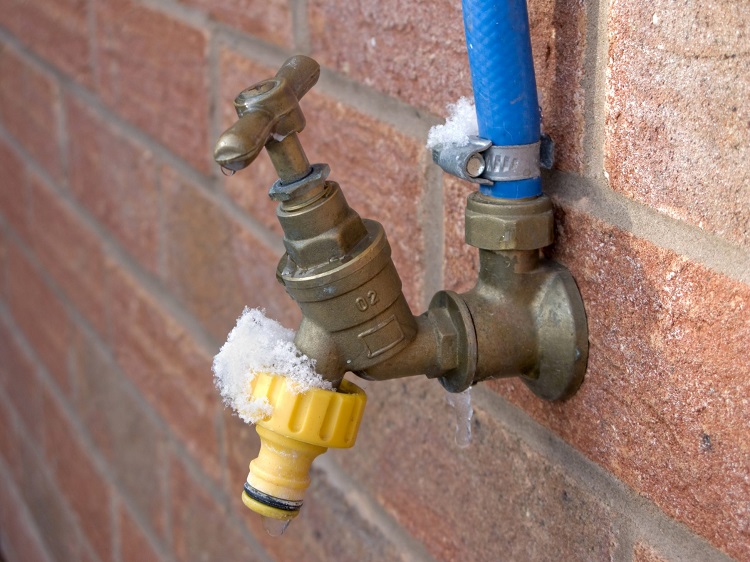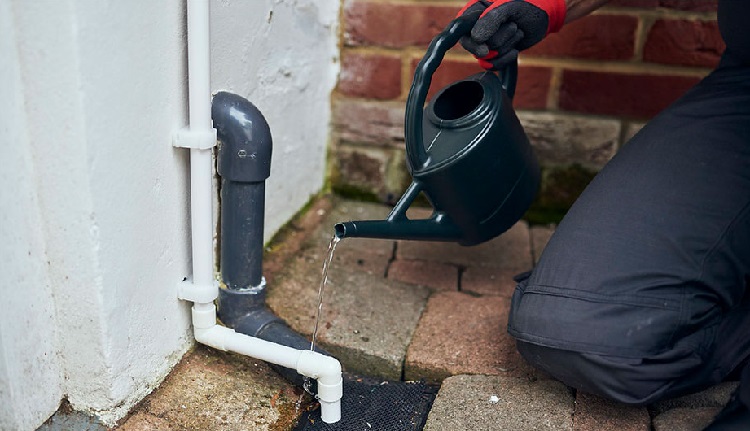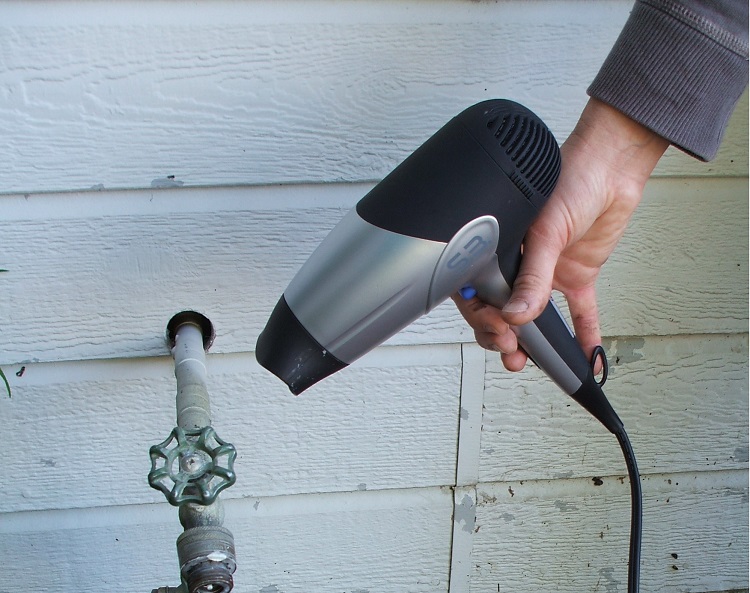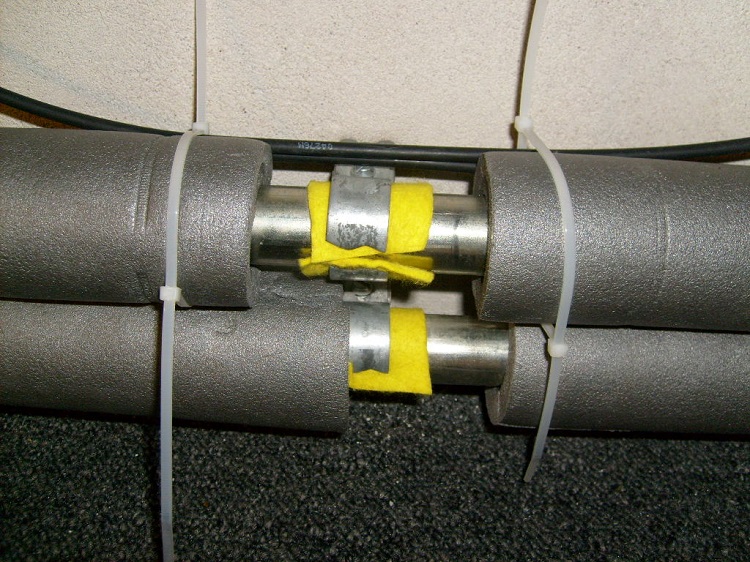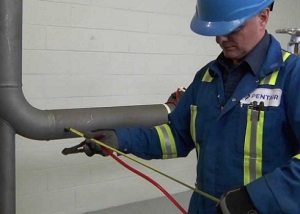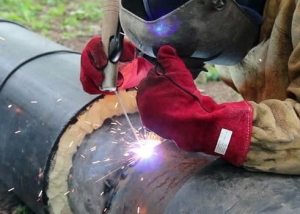If the water supply system or sewer system of a private or country house was designed and installed without taking into account winter weather conditions, then the freezing of liquid in pipes during their year-round use is a matter of time. This situation is not only unpleasant from the point of view of comfort in housing, it is also dangerous by flooding the house with sewage and breaking through those parts of communications that are outside the house. Therefore, in the case of frosts, it is necessary to quickly decide how to melt the ice in the pipe. There are several ways to deal with the problem, but not for all types of pipes they are equally suitable.
Content
When pipes can freeze
Each region has its own climate features, somewhere frosts come earlier, somewhere a little later. The duration of the cold period is also different. It is possible to determine when and how quickly communications freeze if it was not possible to warm them before the cold season: it all depends on the type of system and air temperature.
In the ground parts of the water supply, the water will freeze already at 0 ° C, underground pipes will no longer allow fluid to pass through when the soil freezes to the depth at which they are located. Approximate levels of soil freezing in different parts of the country are presented in table 1.
Table 1
| Area | Depth of soil freezing, average, cm |
| Stavropol, Krasnodar | 60-80 |
| Kursk, Belgorod | 100 |
| Moscow, St. Petersburg, Ryazan, Novgorod | 140 |
| Uralsk, Samara | 160 |
| Perm, Yekaterinburg | 190 |
| Novosibirsk, Omsk | 220 |
| Surgut, Nizhnevartovsk | 240 |
In some regions, the soil freezes so deep that it is still impossible to do without insulation, since digging a very deep ditch in the garden is too expensive and this will create inconvenience for the maintenance of the system. If the water supply or sewerage has not been properly prepared for the cold, you need to stock up in advance with the necessary tools for heating and prepare for repair. To restore the performance of the pipes using heat, saline and technical means.
How to melt ice in a pipe in the house and on the street
The most important problem will be the search for a blocked area, especially if the pipes are buried in the soil or embedded in the walls. Therefore, you need to stock up on a long cable - you need to enter it into the part of the pipe free from ice and move along it. Sooner or later, his tip will hit a barrier; then the cable can be removed, measure the length and determine the location of the cork.
When choosing a method of work, you need to consider the material from which the pipes are made. The simplest, for example, method of heating an outdoor system is to use a blowtorch or a primitive structure like a torch. But polymer pipes cannot be heated in this way. Also, the heating of the system indoors and outdoors may vary.
How to heat pipes in a house
If the owners left their housing for a short while, and upon returning, they discovered a lack of water due to the fact that the pipes in the house froze, then everything is simple: when the heating starts, the ice will melt naturally.The same applies to sewerage - as soon as the temperature in the room rises, its work will also be restored. Experts recommend opening taps in the bathroom, in the kitchen immediately after the pipes begin to heat up. This will reduce the pressure in the system.
If the house has plastic pipes, then, most likely, the owners will not experience any negative consequences from freezing. The polymers are elastic, and ice will simply stretch their walls a little, but will not tear. In the case of steel utilities, before starting to warm up the house, it is necessary to shut off the water supply and inspect the utilities for damage in order to prevent flooding.
If part of the water supply or sewage system located in an unheated basement is frozen, you can increase the temperature in it with a heater or heat gun.
Important! Do not direct the flow of hot air from the heat gun directly to the polymer pipes.
Sometimes it happens that the pipe froze at the place where it exited from the warm basement to the warm underground duct. Then you can simply disassemble it and knock it out or drill an ice plug.
How to unfreeze street communications
There are many ways to heat street systems, but each requires accuracy and thoughtful action.
- Electric heating. Only suitable for metal pipes, since plastic pipes do not conduct electricity. To melt the ice, you need to connect the contacts of the device to different ends of the water supply and turn it on. This method does not take much time, since the pipe heats up pretty quickly. It is only necessary to observe safety measures.
- Use a building hair dryer. Using this method, you can melt the ice in any pipe, but it should be understood that the temperature of the air directed to the plastic product should not exceed 80 ° C, otherwise the water supply system may be deformed. A variant of this method is the use of a blowtorch or even a bonfire near a frozen area. But in a similar way it is possible to deal with ice only in steel and cast-iron pipes, while there is a risk of their rupture from temperature extremes.
- Hot water. This method is quite laborious, but also effective. It consists in wrapping a frozen pipe with a rubber hose and supplying hot water to it. The most difficult part here is to ensure a continuous flow of warm liquid, otherwise the hose will also freeze.
- Heating cable. Such a device can be purchased at the store. It is enough just to wrap a pipe around it, connect it to the mains and wait until the ice melts. This is the most modern solution, suitable for all types of pipes, but in an emergency case, you can use it, if only there is access to them.
How to melt ice in closed pipes
If the part of the system that is located in an inaccessible place (underground or in the wall of the house) has frozen, methods with water or steam can be used.
Pouring warm water. A hose is introduced into the pipe and connected to the source. You should not do too much pressure right away, otherwise you will have to fight with water gushing back. As the ice melts, push the hose further until the ice has completely melted. Craftsmen use a low-power pump for such purposes, which can be connected to a home electrical network.
Helpful advice! It is much more efficient to use saline - ½ packs per bucket of water. Then the ice will melt faster. This method is suitable for any pipes.
Heated by steam. Instead of water, you can use steam. One of the improvised home methods is the use of a pressure cooker. One end of the hose is put on its cap, and the other is inserted into the pipe and advanced as the plug melts.
If ice formed in a pipe that runs in the wall, then it is easiest to heat it with the same building hairdryer.To do this, a stream of warm air you just need to direct the plaster in the right place. A household hair dryer for drying hair will also help. You can simplify your task by constructing a kind of visor from cardboard and fixing it to a wall. Under it, warm air will collect, and the heating process will go faster.
Home craftsmen also suggest using boilers, home-made heating cables and other devices for heating. But this can be risky - it is quite possible to get an electric shock or to arrange a short circuit.
Prevention measures and rules for the construction of communications
So that the methods described above are never useful to you, you should design and build a sewer and water supply only according to SNiP. Today, information on climatic conditions is quite accessible, and it must be used. If it is not possible to lay pipes deeper than the freezing point of the soil, they should be insulated. To do this, use:
- Styrofoam.
- Mineral wool.
- Polyurethane foam.
- Foamed polyethylene and rubber.
- Heating cables.
There is no point in saving on thermal insulation, otherwise in the winter period you will have to deal with heating regularly. In addition, such materials can reduce heat loss.
To melt ice in a frozen pipe of a water supply or sewage system is not an easy task. It becomes even more complicated when ice forms in underground utilities. And although there are many ways to combat this phenomenon, it is still easier to prevent it. Pipes should be laid at a specially calculated depth and use insulating materials.
